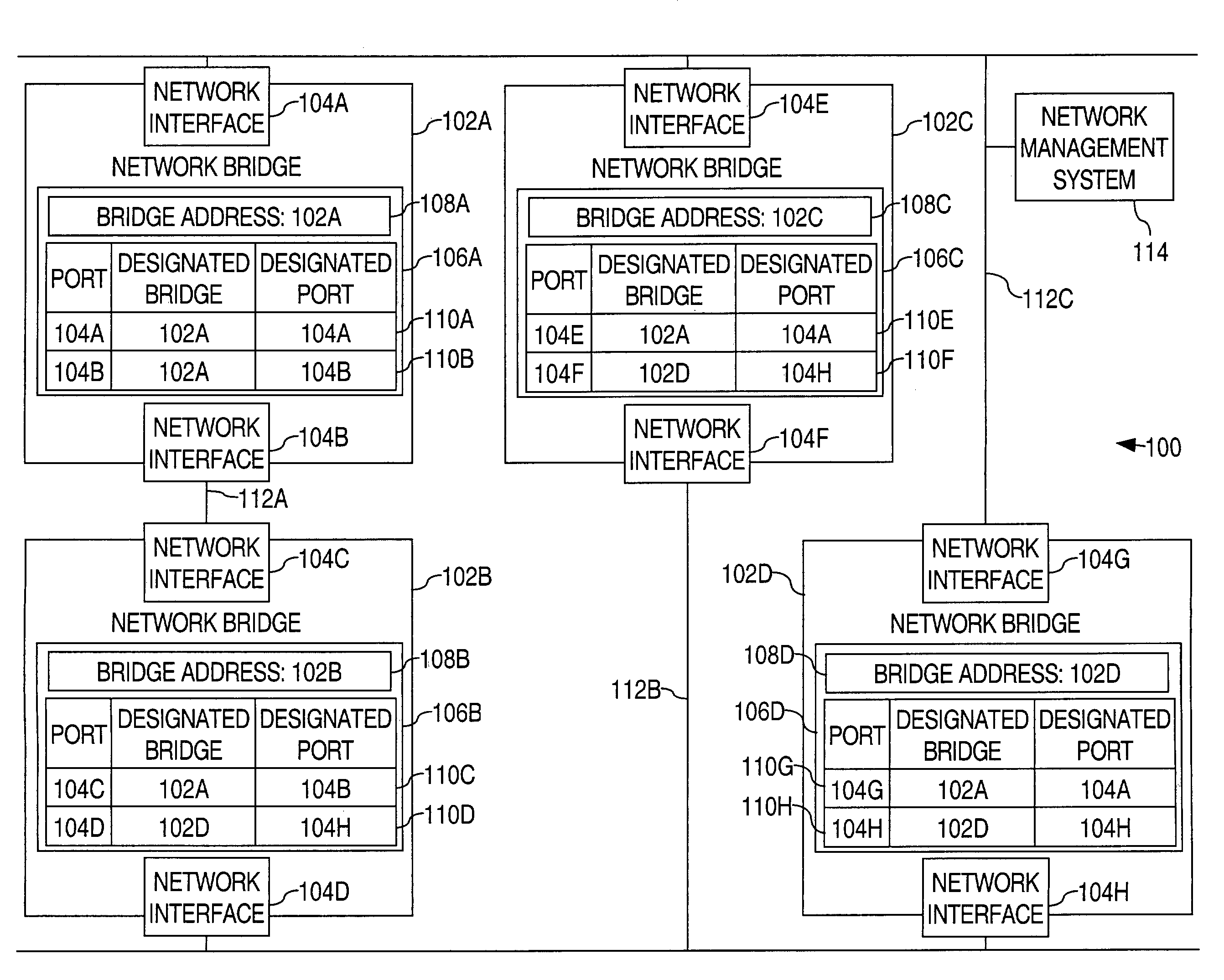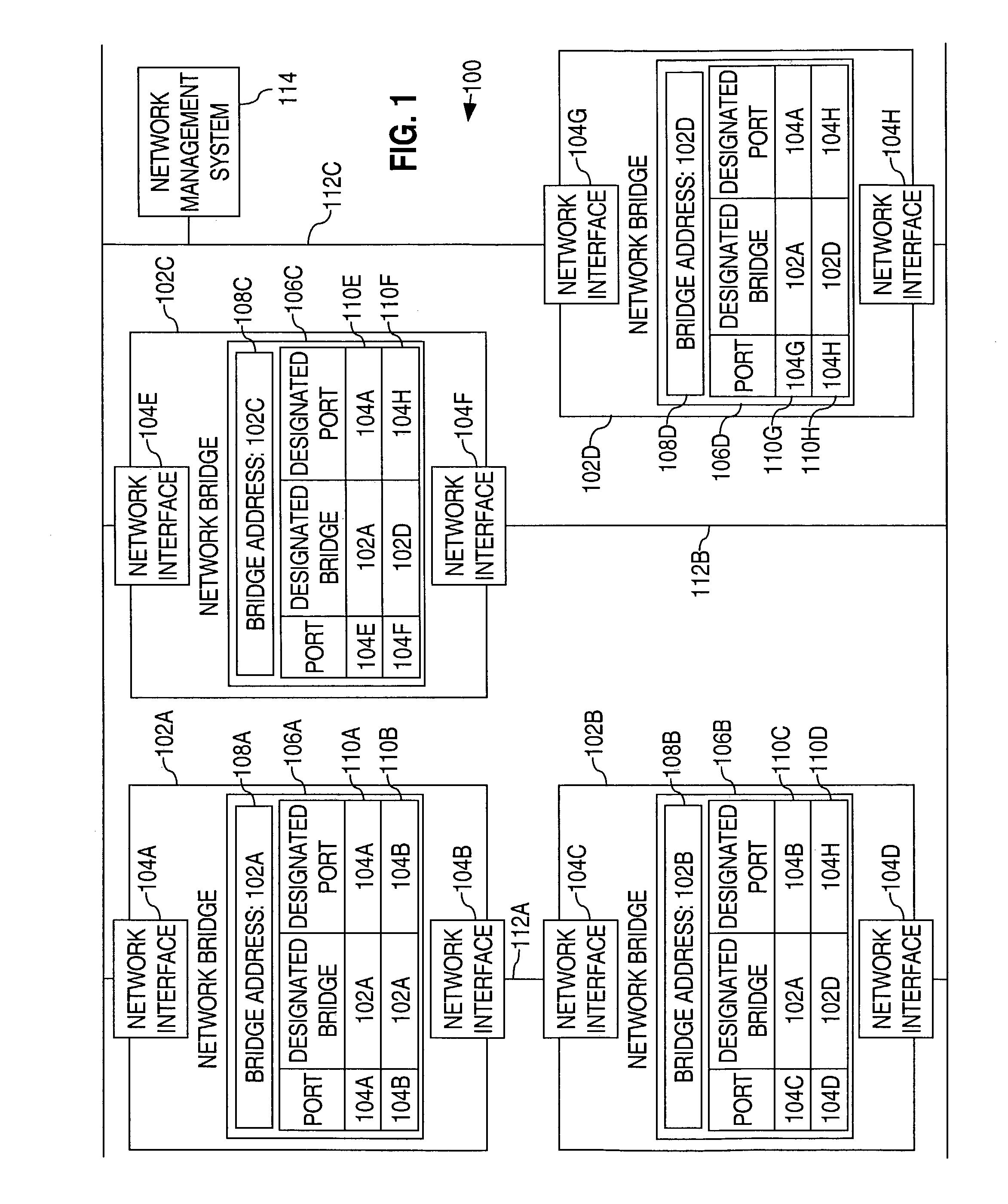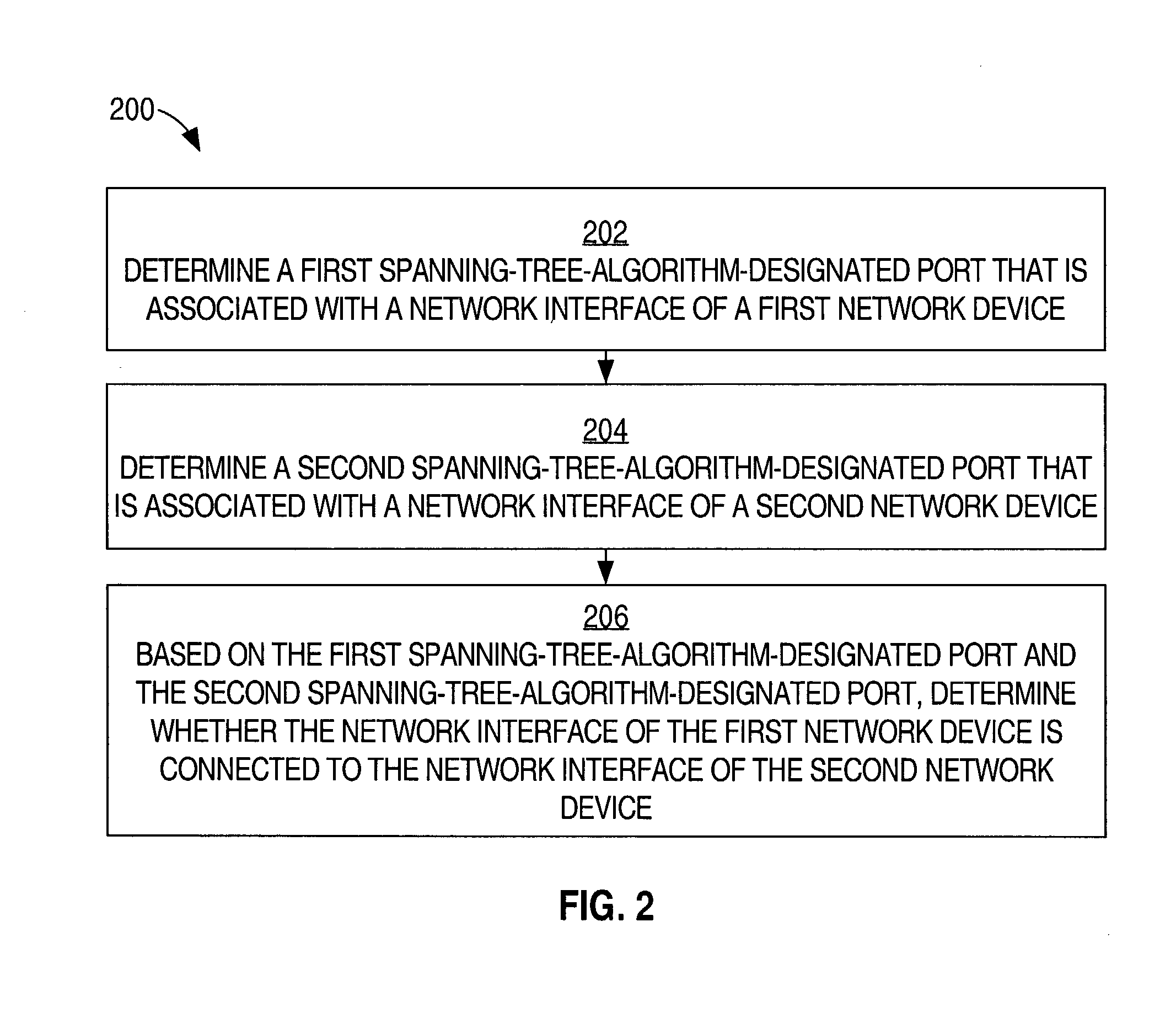Method and apparatus for determining a network topology based on Spanning-tree-Algorithm-designated ports
- Summary
- Abstract
- Description
- Claims
- Application Information
AI Technical Summary
Problems solved by technology
Method used
Image
Examples
Embodiment Construction
[0023]A method and apparatus for determining a network topology based on Spanning-tree-Algorithm-designated ports is described. In the following description, for the purposes of explanation, numerous specific details are set forth in order to provide a thorough understanding of the present invention. It will be apparent, however, to one skilled in the art that the present invention may be practiced without these specific details. In other instances, well-known structures and devices are shown in block diagram form in order to avoid unnecessarily obscuring the present invention.
[0024]Embodiments are described herein according to the following outline:[0025]1.0 General Overview[0026]2.0 Structural Overview[0027]3.0 Functional Overview[0028]4.0 Method of Determining a Network Topology Based on Spanning-Tree-Algorithm-Designated Ports[0029]5.0 Implementation Mechanisms—Hardware Overview[0030]6.0 Extensions and Alternatives
1.0 General Overview
[0031]The needs identified in the foregoing B...
PUM
 Login to View More
Login to View More Abstract
Description
Claims
Application Information
 Login to View More
Login to View More - R&D
- Intellectual Property
- Life Sciences
- Materials
- Tech Scout
- Unparalleled Data Quality
- Higher Quality Content
- 60% Fewer Hallucinations
Browse by: Latest US Patents, China's latest patents, Technical Efficacy Thesaurus, Application Domain, Technology Topic, Popular Technical Reports.
© 2025 PatSnap. All rights reserved.Legal|Privacy policy|Modern Slavery Act Transparency Statement|Sitemap|About US| Contact US: help@patsnap.com



